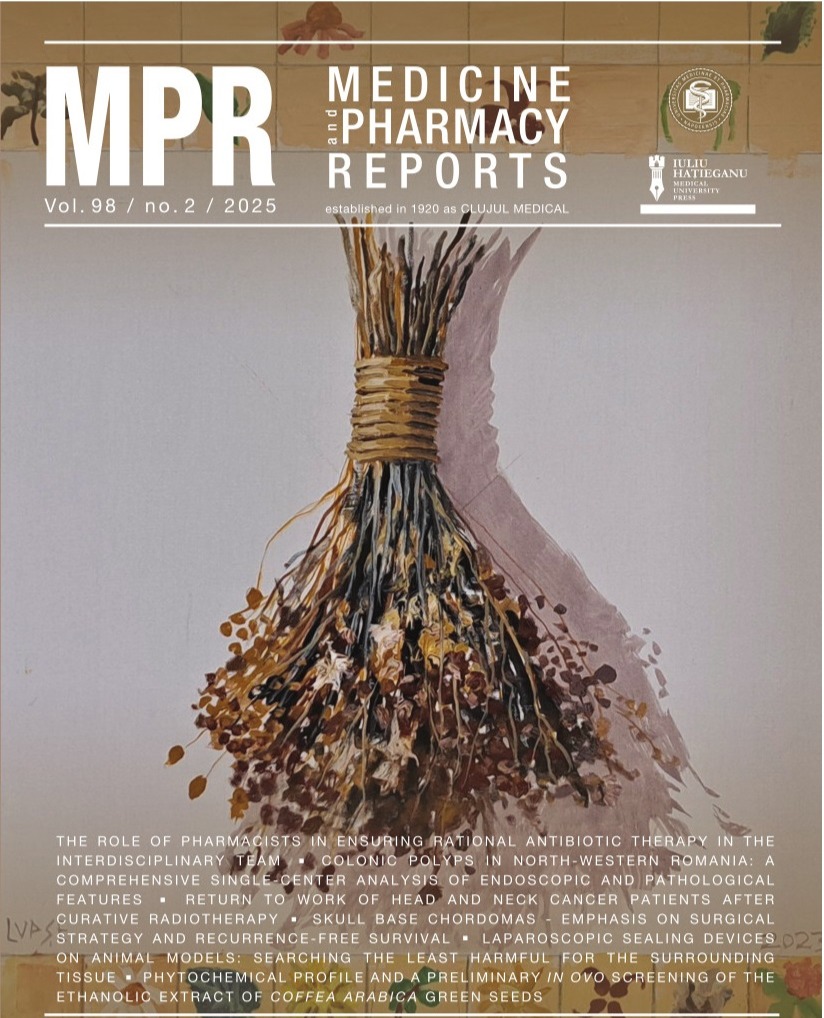Return to work of head and neck cancer patients after curative radiotherapy
DOI:
https://doi.org/10.15386/mpr-2874Keywords:
head and neck neoplasms, return to work, radiotherapy, cancer survivors, quality of lifeAbstract
Background. Our objective was to evaluate the rate of reemployment after having curative radiotherapy for head and neck cancer and to identify the barriers of successful return to work in this patient population.
Methods. The study was retrospective, cross-sectional, analytical and cohort type, it included 52 consecutive patients attending follow-up visits after curative radiotherapy for head and neck cancer at a single tertiary center. Participants completed a survey to assess demographics, tumor characteristics, lifestyle choices and quality of life questionnaires. We analyzed the rate of reemployment and the association with different parameters.
Results. At the time of the survey, the successful return to work rate among head and neck cancer survivors was 55.8%. Most of the returners, 93%, started to work within 14 months from the time of the diagnosis. Educational level, work type and tumor stage were predictive for successful return to work. The main barriers for reemployment were physical symptoms such as fatigue, speech disorders and eating problems. Conclusions. Head and neck cancer survivors who manage to return to work have a better quality of life and global health status than those who could not return. The most vulnerable patients are those with lower education, doing manual work and with advanced stage cancer. Optimized radiotherapy planning to reduce radiation induced late effects in conjunction with coordinated rehabilitation programs are needed to facilitate head and neck cancer survivors’ reemployment.
Downloads
Published
How to Cite
Issue
Section
License
The authors are required to transfer the copyright of the published paper to the journal. This is done by agreeing to sign the Copyright Assignment Form. Whenever the case, authors are also required to send permissions to reproduce material (such as illustrations) from the copyright holder.

The papers published in the journal are licensed under a Creative Commons Attribution-NonCommercial-NoDerivatives 4.0 International License.

